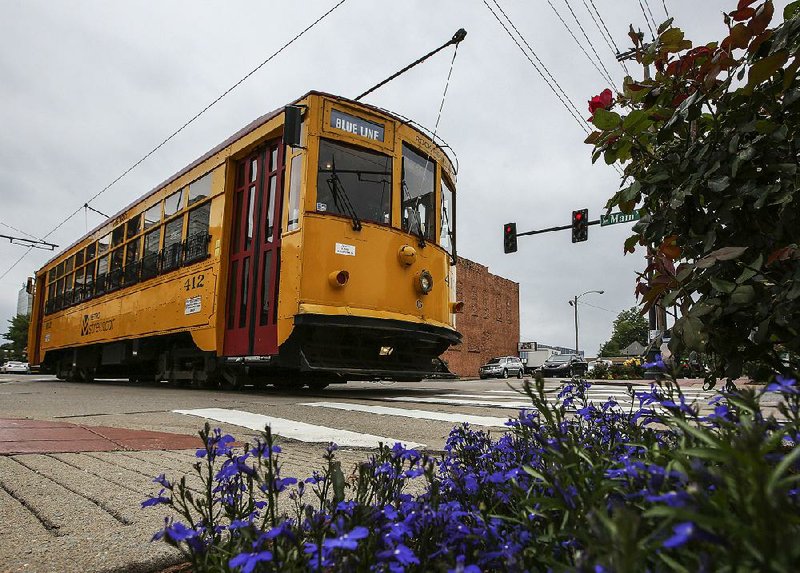Rock Region Metro's streetcar system should be up and running this summer after taking almost a year off because of the coronavirus pandemic.
Charles Frazier, chief executive officer for Rock Region Metro, said Tuesday that the North Little Rock loop for the streetcar system is expected to resume by June 1. Frazier said the Little Rock loop reopening will be delayed because of Interstate 30 construction but runs likely will resume in July.
"The trolleys are out on the track right now as we are in the process of recertifying our operators," Frazier told the Rock Region Metro board, noting that the recertification focuses on safety. "This is the reason you will see streetcars out and about."
The agency shut down the streetcars in 2020 as nonessential during the pandemic.
The streetcar system has been in operation for 18 years. Its first phase opened in 2004, and a second phase that extended trolley service to the Clinton Presidential Center opened in 2007.
Civic leaders have said the trolleys have helped spur revitalization downtown and fostered economic development. The trolleys also have been featured in materials promoting the area.
Rock Region Metro eliminated fares on the streetcars in 2019, a decision that spurred a tenfold increase in ridership.
North Little Rock Mayor Terry Hartwick said the trolley system is an asset to the city.
"I am not sure how popular it is as transportation within the city, but it's a great way for people to cross from Little Rock to North Little Rock and vice versa without having to search for parking or get back in their cars," Hartwick said. "Because of that, I believe it will be a boost to the downtown area once restrictions are lifted."
The City Council approved last year an ordinance that established a downtown entertainment district as part of an effort to boost the city's economy during the pandemic.
The Argenta outdoor dining district ordinance allows restaurants, bars and breweries to sell alcoholic beverages that can be taken out of the establishment and consumed within the district's boundaries between 10 a.m. and 10 p.m. daily.
The city also established an outdoor dining weekend where Main Street is closed off to allow visitors to walk around the area with their food and drinks.
Hartwick said he expects the city and Frazier will discuss what accommodations can be made on the third weekend when the streetcars will be running through Main Street.
"I think Frazier will be able to work with us on this issue," Hartwick said. "I have no doubt about that."
Frazier said last year that work on the 30 Crossing project would lead to a "significant" impact on Rock Region Metro's streetcar system, mostly on its extension connecting the Clinton Presidential Center.
He said at one point in 2018, there was a fear the construction project might take the entire streetcar system offline for upward of five years. The project is now expected to have minimal impact on the Little Rock system.
The 30 Crossing project is the largest undertaking by the state Department of Transportation and will widen the 6.7-mile corridor from Interstate 530 in Little Rock to Interstate 40 in North Little Rock to 10 lanes from six and replace the bridge over the Arkansas River.
Central Arkansas planners had long called for an overhaul of the congested corridor, which features the convergence of six major highways in the space of fewer than 7 miles. The I-30 bridge over the river, which dates to the late 1950s and was built at a cost of $5.5 million, carries 124,000 vehicles daily.
The project is part of the department's $1.8 billion Connecting Arkansas Program, which focuses on regionally significant work. It was financed, in part, by a 0.5% increase in the statewide sales tax that voters approved in 2012 as part of what became Amendment 91 to the Arkansas Constitution.
